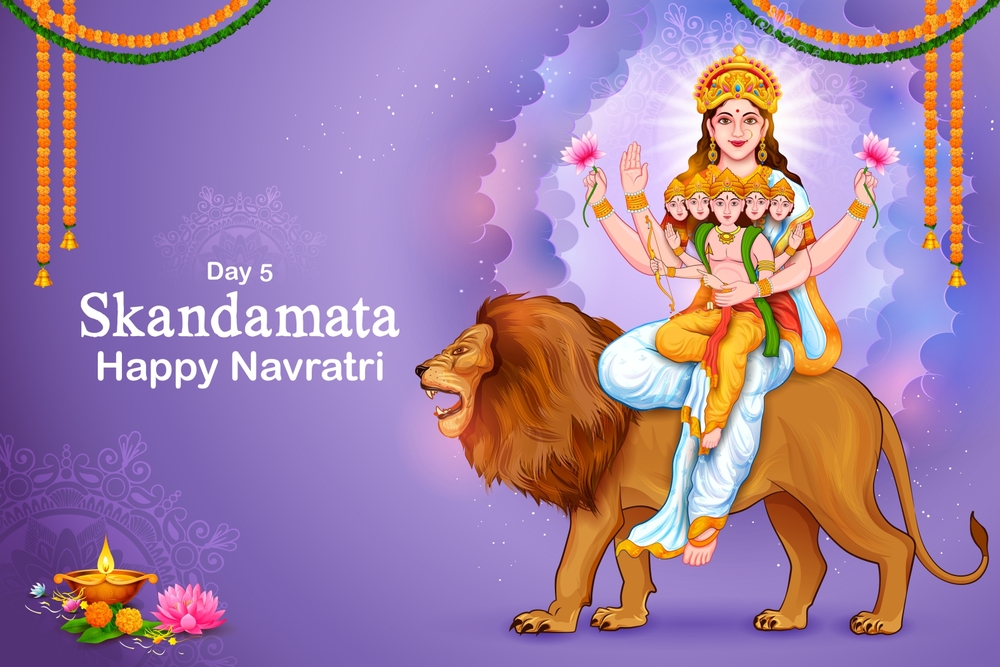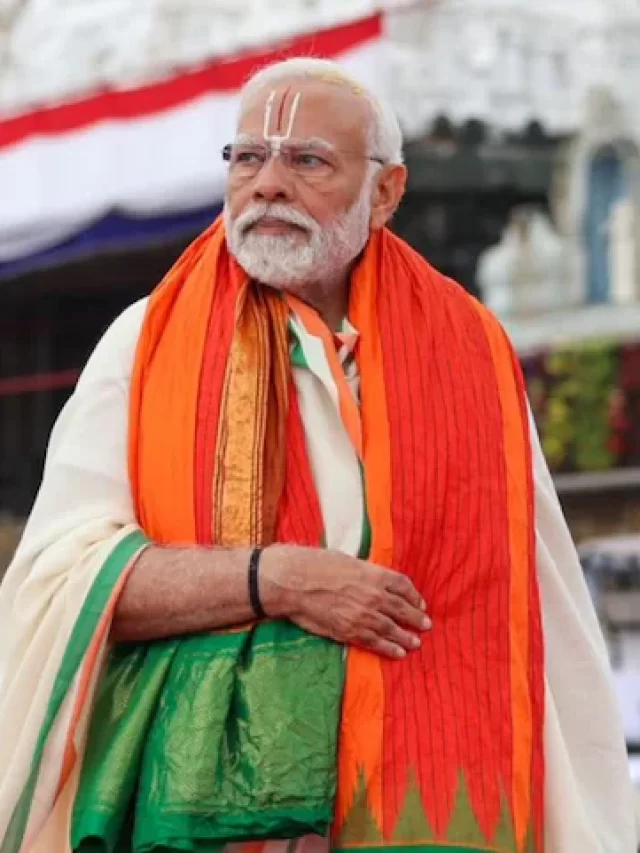Festivals in honor of Skandamata celebrate the divine qualities of motherhood, strength, and protection that she embodies. Whether through the grand celebrations of Navaratri or the regional observances like Skanda Sashti and Kartika Purnima, Skandamata’s presence is cherished by devotees seeking her blessings for prosperity, wisdom, and protection. Her nurturing yet powerful form serves as a reminder that strength and compassion can coexist, guiding individuals through life’s trials and leading them toward spiritual growth and fulfillment.
Skandamata

Skandamata, the fifth manifestation of Goddess Durga, is revered as the mother of Lord Skanda (Kartikeya), the god of war and victory. Her name translates to “mother of Skanda,” and she is often depicted holding her divine son in her lap, symbolizing maternal love, power, and protection. Skandamata represents the nurturing aspect of the divine feminine and is worshipped for granting wisdom, power, and prosperity. Her worship is particularly significant during the nine-day festival in Navaratri pooja, where each day is dedicated to one of the nine forms of Durga. The fifth day is set aside for Skandamata, making it a day of special rituals, prayers, and celebrations.
The Worship of Skandamata during Navaratri
Navaratri, which means “nine nights,” is a grand Hindu festival dedicated to the worship of the nine avatars of Durga, and it holds immense spiritual and cultural significance in India. On the fifth day, Skandamata is worshipped with great devotion, as she is believed to be the embodiment of a mother’s strength and protection. Her divine energy is invoked to seek blessings for overcoming challenges, achieving success, and ensuring the well-being of one’s family.
Rituals and Traditions on Skandamata’s Day
On the fifth day of Navaratri, devotees pay special homage to Skandamata through a series of rituals. Early morning prayers begin with cleansing and purification of the worship space, which is often decorated with yellow flowers, as yellow is considered her favorite color and symbolizes clarity, prosperity, and divine energy. Offerings such as bananas, fruits, and sweets are placed before her image, and hymns from the Durga Saptashati are recited to invoke her blessings. The lighting of lamps and incense adds to the sanctity of the worship, and devotees chant her name, asking for her protection and guidance.
Many devotees observe fasting on this day to purify their minds and bodies. Some fast completely, while others follow a diet of fruits and milk. The fast is broken only after performing the evening aarti (ritual prayer) and offering food to the goddess. This act of devotion is believed to help devotees cleanse their souls and attain spiritual elevation.
Skandamata is worshipped not only for her motherly affection but also for her ability to grant moksha (liberation from the cycle of birth and death) and protect her devotees from all forms of evil. It is believed that worshipping her can relieve one of sins, dispel ignorance, and bring peace and tranquility to one’s life.
Major Festivals Celebrating Skandamata
While Navaratri is the most prominent festival where Skandamata is worshipped, there are other regional and cultural festivals that honor her divine presence. These celebrations, though localized, emphasize her role as the protector and provider of wisdom, strength, and prosperity.
1. Navadurga Mahotsav
Navadurga Mahotsav is celebrated with great fervor in parts of India, particularly in West Bengal, Maharashtra, and Gujarat, where the nine forms of Durga, including Skandamata, are worshipped. This festival stretches over the course of Navaratri, with each day dedicated to a different form of Durga. On the fifth day, devotees perform elaborate rituals to honor Skandamata. In some temples, idols of Skandamata and Lord Skanda are beautifully adorned, and special prayers and offerings are made. Devotees also engage in community celebrations, including music, dance, and cultural performances, making it a vibrant part of the Navadurga Mahotsav.
2. Skanda Sashti
Though primarily dedicated to Lord Skanda (Kartikeya), Skanda Sashti is a festival where Skandamata is also worshipped in her role as the divine mother. Celebrated in Tamil Nadu and other southern states, this festival marks the victory of Lord Skanda over the demon Surapadman. Devotees pay tribute to Skanda’s divine mother, Skandamata, recognizing her nurturing role in raising the god of war and bestowing him with the strength to defeat evil. Fasting, prayers, and special temple rituals are observed during this festival, and the worship of Skandamata is seen as an integral part of honoring Lord Skanda.
3. Kartika Purnima
Kartika Purnima is a significant festival celebrated in the month of Kartika (October-November), coinciding with the full moon. Although the festival primarily honors Lord Skanda, it also involves worshipping Skandamata. This day is considered highly auspicious for prayers, charity, and religious activities. Devotees visit temples dedicated to Skanda and Skandamata, seeking their blessings for prosperity, protection, and spiritual growth. In some regions, devotees take a ritualistic dip in holy rivers as part of the cleansing process, believed to wash away sins and grant divine blessings.
Symbolism of Skandamata in Festivals
Skandamata’s depiction holding her son Lord Skanda on her lap is a powerful representation of motherhood, protection, and nurturing energy. Her four hands carry a lotus flower, a symbol of purity and spiritual awakening, while one hand remains in a gesture of blessing. Her seated posture on a lion, which signifies power and fearlessness, demonstrates that she is both a compassionate mother and a fierce protector.
Worshipping Skandamata during festivals symbolizes the power of maternal love in the face of adversity. It also represents the importance of seeking knowledge and spiritual enlightenment, as Skandamata grants wisdom and helps Google devotees overcome ignorance. Her connection to Lord Skanda, the god of war, signifies that a mother’s nurturing love can give rise to immense strength and courage, both in her children and her devotees.
The Spiritual Significance of Skandamata Worship
Skandamata is revered not only for her maternal qualities but also for her ability to guide devotees on their spiritual journey. By worshipping her, devotees seek her grace to attain inner strength, clarity of mind, and spiritual enlightenment. She is believed to help individuals overcome challenges, gain insight into life’s complexities, and progress on the path of self-realization.
Worshipping Skandamata also highlights the importance of balancing nurturing love with the ability to protect and guide. In the festivals dedicated to her, devotees are reminded of the significance of both caring for others and standing strong in the face of challenges. Through her blessings, one can gain wisdom, remove negative energies, and develop a more profound sense of purpose in life.



